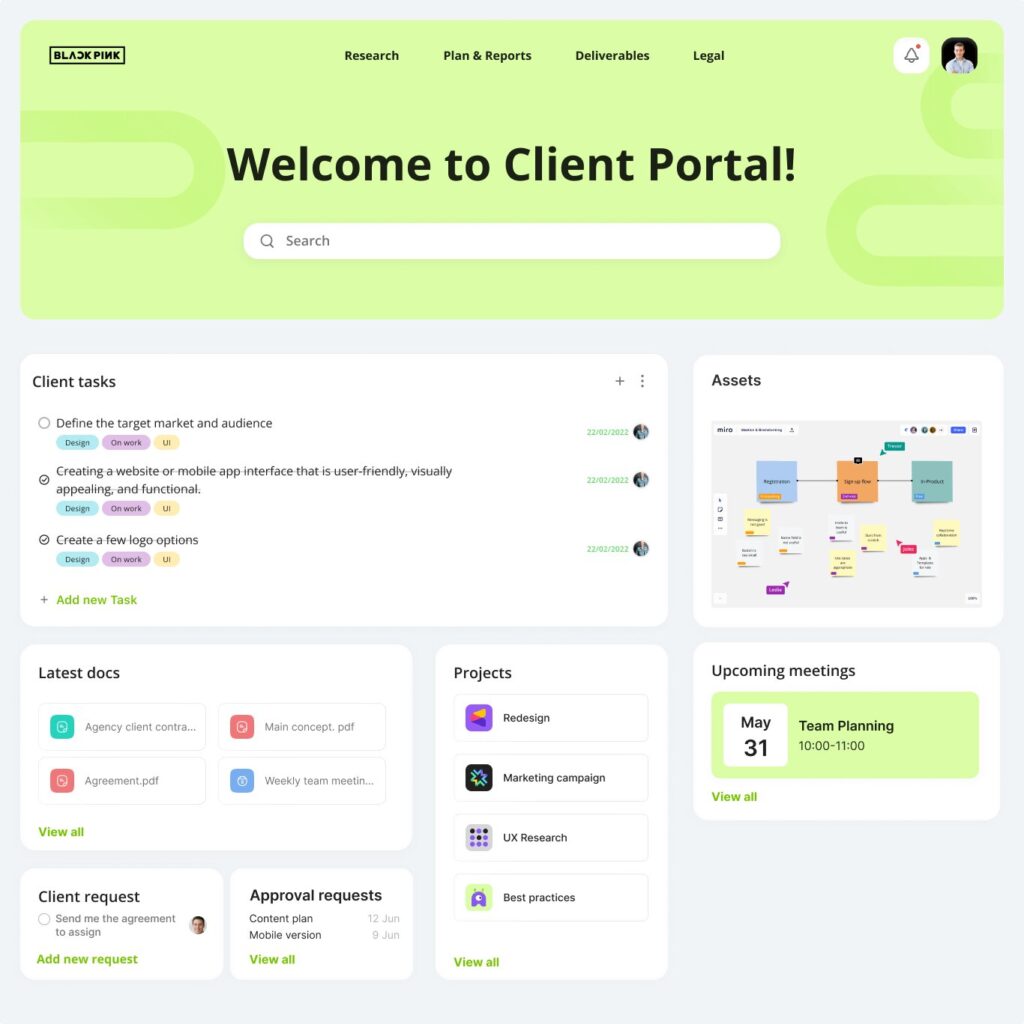
Effective Change Management: 10 Steps To Lead The Transformation
- October 4, 2023
- 9 Min read
We live in a constantly changing world that is becoming more complex and harder to predict. Things like video conferencing or online shopping, which we used to see in fantastic movies, are now a reality. Changes affect individuals and teams in entirely unexpected ways and force both to transform to stay ahead of new technological and economic developments.
Gartner research and advisory company concludes that most organizations have lived through five transformational changes in the last three years. Another research reveals that companies with a consecutive change management approach were 33% more likely to experience good or excellent outcomes than teams without a plan.
In this article, we explain some basic terms and models of change management and give a 10-step checklist for effective change management for your business or team.
What Does Change Management Mean?
Changes in organizations may refer to company culture, internal processes, infrastructure, corporate team roles, software technology, vision of the future or other critical aspects that need improvement. You can imagine change as a journey from point A to point B, where the endpoint is the goal.
Change management is a map and a backpack to bring you to great new peaks. It is a process of leading and facilitating organizational change at any level where it occurs. Change management includes tools and techniques to manage the human side of business change. It is up to leadership teams how to approach discussions, execute decisions and apply change management strategies.
Organizational Changes: Which is Your Case?
There are two types of organizational changes.
Adaptive changes are small and continuous, similar to updating apps on mobile phones. Companies constantly polish products, processes, workflows and strategies over time.
Transformational changes are more extensive and sometimes dramatic, like a shift to online work in 2020 due to the COVID-19 pandemic or a team decision to evolve to the international level. Such organizational changes imply a vision of future opportunities and long-term change management strategies.
Personal vs organizational change
Organizational change deals a lot with human nature. As the group moves toward new objectives, team members have to switch from their current state and adapt to the new, future goals.
Effective change management oversees two sides of the coin: an individual perspective and team opportunities.
Individual change management
Great organizational changes are only possible when all teammates do their part of the work and embrace the opportunity for change. Managing the human side of a transformation is often the most challenging component of an organizational change.
It’s somewhat naive to expect managers and employees to meet new work procedures or software developments with applause. First, they might feel uncertain because the change interferes with their familiar clear routine. Team members can also deny the positive opportunity in their work or be frustrated if they donʼt cope with new challenges.
The Kubler-Ross Cycle of Grief shows how uncomfortable the team feels about the change happening. Understanding how employees go through denial, anger, bargaining, depression and acceptance is an opportunity to find a common language with your people.
Another model describes how individuals can change successfully with five words – Awareness, Desire, Knowledge, Ability and Reinforcement. Each human state in Prosci’s ADKAR Model corresponds to the specific phase of the project objective work.
Organizational change management
Our world has become multi-layered and hard to understand. What changes are more urgent? What will be the future effects? Without a vision of the future for organizational change, decisions turn into a mesh of reaction and counter-reaction with no clarity or perspective. Organizational models provide a structured approach for the leadership team.
One of the most influential management books of the last decade is Frederic Laloux’s Reinventing Organizations. The author marks five types of organizations that evolved through human history, from the autocracy of red organizations to the holacracy of modern blue companies. The book has inspired thousands of organizations to positively adopt new management principles and change.

Professor at the Harvard Business School and thought leader Dr. Kotter observed numerous leadership teams and companies as they strived to change and execute their strategies. He identified the common factors that allow change successfully and documented them as the 8 Steps for Leading Change. Dr. Kotter implements his theory in leadership training.
The VUCA model stands for the Volatility, Uncertainty, Complexity and Ambiguity that businesses and teams encounter every day. The acronym first emerged in 1987 from Warren Bennis and Burt Nanus leadership theories. VUCA describes a way of thinking to deal with problems of our digital and dynamic world. The same four letters mean Vision, Understanding, Clarity and Agility.

Tools for Your Change Management Backpack
The set of tools and managers’ approaches varies in different cases and is a matter of task and taste. Here is a list of instruments and resources that can be helpful.
- DiSC® assessment tool
- language techniques for communication
- leadership training courses
- client-journeys
- product roadmaps
- SWOT analysis
- 360 feedback
- client surveys
- meeting protocols
- post mortem review
- readiness assessments
- collaboration software tools like FuseBase .
10 Steps to Change Successfully
According to Procsi research, change teams choose either management methodology for general guidance (76%) or a checklist for activities (46%) to go through a transformation. Following the 10 steps below you can avoid typical traps and change positively.
1. Feel the wind of change
Leaders and managers are the first ones to grasp when change is necessary. It might be an external pressure or a demand from clients or a request from the team. In any case, it’s essential to see the opportunity and avoid the temptation of simply maintaining the regular workflow.
“Change or Diе” – the title of Alan Deutschman’s book expresses the feeling that change teams should not miss.
2. Prepare yourself for change
What exactly is forcing the change? Is it new leadership or chasing new technology, a shift in your industry or the pressure of a new competitor? Without your inner understanding and analysis, it might be difficult to lead the transition and not just observe the change happening.
Discussions with your leadership team or consultant can clarify the opportunity, risk and vision of the future for a leader in the first place. In some cases, it might be beneficial to seek external expertise. For instance, you can refer to Toptal’s guide on using coaching in organizational change management, a comprehensive resource that provides valuable insights and guidance on how to effectively manage change.
3. Revise resources beforehand
Leadership. A positive leader who guides the organization through change is a great resource for success. The leader should support the change by giving constant attention, motivating others, facilitating discussions, making effective decisions, aligning priorities and staying in touch. The best two words to describe the main contributor are “active and visible.”
Team. The change team or community should consist of flexible, ambitious, decisive, collaborative individuals. It’s vital to speak one language and share the same values.
Funding. Any project needs dedicated resources and funding to do the change management work. Someone must be responsible for assets to fulfill the goals of the change team.
4. Prepare your people for change
In the preparation phase, the manager or the leader communicates what is happening to the team. He describes the opportunities and benefits of change to employees in a common language. This might occur in discussions or in shared documents. In any case, people start to associate themselves with the reorganization process, feel valued and add to the objective work charity.
5. Plan for change
The change management plan might initially look like notes in your workplace but later on, it grows into a series of documents describing the change happening.
- List your strategic goals
- Identify key performance factors
- Select responsible people from the change team
6. Implementation in the business structure
In this step, the vision turns into reality. You can focus on logistics, instructions, procedures and timetables. There are a lot of details that state the new employee behavior, budgets, collaboration software and other structural elements of the change happening.
7. Implementation into the company culture
It takes time for new ways to root into employee minds and business mechanisms. During the transition period, human nature adopts the new status quo and accepts the new behavior defined by the change team.
Itʼs essential to prevent a reversion to the prior “good old” patterns. Such backsliding is not happening if the new organizational structure has clear and functional control and reward systems.
8. Review progress and analyze results
Was the change a success, failure or a mixed result? The “project post-mortem” is as valuable as a story of success because it gives endless insights into the question, “What went wrong?” This gives the change team feedback for future projects.
9. Speaking to the team
Communication at the beginning of the transformation should be about logistics. Then, spreading the triumph or successes among employees can help your team feel as one even if the change scopes were not fully reached. Discussions and debriefs can open new revelations and opportunities.
10. Celebrate and post
Despite the change result, itʼs a positive practice to celebrate the courage of the team members and leaders. And, of course, you should tweet your success story or insights.
Common Challenges of Change Management
Heading towards organizational change, itʼs essential to forecast all visible roadblocks before the process starts happening. The most common traps that result in change failure are the following:
- goals not properly defined and agreed on
- use of obsolete strategy
- wrong estimation of resources
- poor preparatory communication
- insufficient planning
- inadequate delegation of management roles
- lack of quality control throughout mid-term goals
- shift back to old molds and behaviors
- lack of powerful software tools to support change
Empower Your Team For Change With FuseBase

More than 80% of organizations manage change from the top down. This strategy originates from the 19th century. It actually isn’t ideal for handling complex processes and slows teams down, but it is typical and widely used.
A more positive and progressive approach to change is developing your team’s problem-solving capacity. With FuseBase you can build a knowledge management system where your team members can share insights, project plans, documents and guides, and contribute to the happening change. Your people start pushing the change from the inside, which makes them feel valued and capable of great things.
Manage any business transformation easily with FuseBase
Any change requires courage, awareness and a willingness to take new steps. Try FuseBase and plug your team into the upcoming challenge.
Visit our LinkedIn page for more FuseBase updates and new articles.
Found it useful? Share the article with your community
Subscribe to our blog!
Get weekly tips and insights on how to grow your business